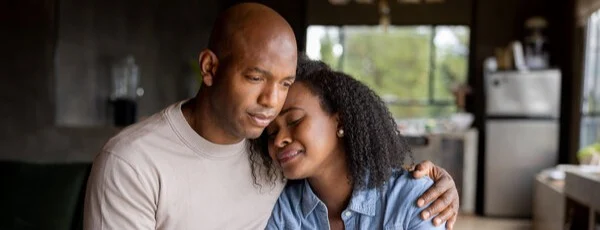Is a Credit Card Secured or Unsecured Debt?

- Most credit cards are unsecured, meaning you qualify based on your credit standing.
- Secured credit cards require a security deposit.
- Secured credit cards are a great option when you need to build or rebuild credit.
Table of Contents
- What Is Unsecured Debt?
- A Credit Card Is Usually an Unsecured Debt
- What Is Secured Debt?
- A Credit Card Is Sometimes Secured Debt
- What Is the Difference Between Secured and Unsecured Debts?
- How to Choose Between Secured and Unsecured Credit Cards
- Strategies for Managing Credit Card Debt
- Quick Comparison of Secured vs. Unsecured Credit Cards
Credit cards can be secured or unsecured debt, and either type can be useful for building and using credit.
Understanding the differences between unsecured and secured credit cards can help you use credit efficiently, build a strong credit history, and avoid needing debt relief.
What Is Unsecured Debt?
Unsecured debt is debt that does not require any sort of collateral to guarantee payment. Instead, the lender decides whether to provide credit based on your credit history and your financial situation.
Even though you aren’t risking any collateral with unsecured debt, it still represents a legal obligation—you can be sued if you don't make the payments on an unsecured debt. Nonpayment is also likely to hurt your credit score and be reflected in your credit history, which makes it more difficult to get more credit.
Common types of unsecured debt include:
Unsecured credit cards
Unsecured personal loans
Medical debt
Buy Now Pay Later credit
A Credit Card Is Usually an Unsecured Debt
According to a survey by the Consumer Financial Protection Bureau, as of the second half of 2024, around 90% of credit cards were unsecured.
So why is that? Because even though collateral gives credit card companies some protection against non-payment, they don't really make their money that way. After all, cashing in a borrower's collateral usually only means getting back money they loaned, not profiting.
What credit card companies really want is for you to use your credit card for a long time, making purchases, carrying a balance at times, and keeping up with your payments. That way, they make money from the fees merchants pay and the interest you pay on your account.
So in most cases, credit card companies decide whether to issue you a card based on the likelihood that you can be relied on to pay what you owe. They judge this likelihood based on:
Your credit score, which is based on your credit history and current use of credit.
The types of credit you've had, and how you've handled it.
Your financial situation, such as how the amount of debt you have compares to your income.
Since this judgment involves weighing a number of factors, some credit card holders represent a bigger risk to the card issuer than others. Credit card companies manage this risk in a couple of ways:
Through your credit limit. Your credit card balance is the amount of money you owe the card issuer at any one time. If you have a limited credit history or a relatively low credit score, a credit card company may issue you a card, but keep your credit limit low. That way they don’t have as much money at risk.
Through the interest rate. Riskier customers are charged higher interest rates. That way, the money the credit card company earns on those accounts can make up for customers who don't pay their bills.
Over time, making on-time payments to your credit accounts can benefit you in a few ways:
Your credit score could improve. Payment history is the biggest factor affecting your score.
The credit card company might raise your limit, because you’ve demonstrated that you pay off your card reliably.
You might qualify for a better interest rate.
Unsecured credit is based on trust. As you prove you repay reliably, you could qualify for more credit and better credit terms.
What Is Secured Debt?
A secured debt is one for which you put up something of value as a guarantee of payment. This may be cash or some sort of property. That cash or property is known as collateral. If you don’t repay the debt, the lender can take the collateral instead.
For some loans, secured debt is the norm. For example, a mortgage on a home uses that home as collateral. If you don’t pay your mortgage, the lender can foreclose on the home and sell it to recover the balance you owe.
Similarly, car loans typically use the vehicle being purchased as collateral. If you don't pay your car loan, the lender can repossess it and sell it to get back what you owe.
Having collateral gives lenders the confidence to make loans. This can work two ways:
Putting something of value at risk gives the borrower a strong incentive to keep up with payments.
Being able to claim that collateral gives the lender a way to get their money back if the borrower doesn't make payments.
Some types of credit can be secured or unsecured. For example, personal loans can be either. So can credit cards.
A Credit Card Is Sometimes Secured Debt
The majority of credit cards are unsecured, but there are also many secured cards available. If a card is secured, you have to offer collateral to get it. With secured cards, the collateral is money you deposit with the credit card issuer.
The money isn't upfront payment against your charges (that’s how a prepaid debit card works). Rather, your deposit is a safety net for the credit card issuer. If you use the card, you still have to pay the bill each month. But if you don’t repay your debt, they can keep your deposit.
With many secured credit cards, your credit limit is often equal to the amount of your security deposit (paying a $200 security deposit, for instance, gives you a $200 credit limit). Some cards give a higher limit than the deposit amount.
Why would you put down a deposit to get a credit card? If you have a limited credit history, or you’ve had credit problems, you might not qualify for a traditional credit card. A secured card may be the best way for you to get credit.
There are a few ways to get your deposit money back. One is to close the account. Assuming all charges are paid off, your deposit is returned to you. Another is to use the card and reliably pay the bill for a while. Some issuers automatically convert your account to an unsecured credit card and return your deposit after six to 12 months.
If that doesn’t happen automatically, you can apply for an unsecured credit card yourself after six to 12 months. If you’ve established a good payment record with the secured card, you may now qualify for an unsecured card. Once your balance on the secured card is paid off, you can close the account and ask for your deposit back.
What Is the Difference Between Secured and Unsecured Debts?
The basic difference between secured and unsecured debts is that secured debts have collateral and unsecured debts do not. That in turn has a big impact on how borrowers and lenders should view these types of debt.
With secured debt, the borrower is putting something at risk. That may be physical property, like a house on a mortgage loan, or a car on an auto loan. For secured credit cards, collateral comes in the form of a cash deposit. The risk to the borrower is that if they default on their payments, the lender can take the collateral.
On the other hand, when there's no collateral, lenders are taking a bigger risk. As a result, they are likely to use tougher approval standards. These standards may include higher credit scores and a higher income.
There are also some similarities in how secured and unsecured debt works. With both types of debt, you have a legal obligation to pay what you owe. Also, both secured and unsecured debt affect your credit score.
One way lenders manage risk for both secured and unsecured debt is via interest rates. In short, lenders are likely to charge riskier borrowers a higher interest rate. The extra money they earn on higher-interest loans helps cover the cost of borrowers who don't pay what they owe.
For example, with both secured and unsecured credit cards, borrowers with excellent credit are typically charged much lower interest rates than those with poor credit scores.
Pro tip: No matter what your credit score is and what rate your card charges you, you can avoid paying credit card interest by paying off your balance in full each month. Just be sure to choose a card that offers an interest-free grace period. Most do.
The following table summarizes the similarities and differences between secured and unsecured debt:
| Secured Debt | Unsecured Debt | |
|---|---|---|
| Common examples | Secured credit cards, mortgages, auto loans, secured personal loans, pawnshop loans | Most credit cards, most personal loans, medical debt, BNPL loans |
| Borrower puts up collateral | Yes | No |
| Legal obligation to pay back debt | Yes | Yes |
| Who has more risk? | Borrower | Lender |
| Does the debt impact credit scores? | Yes | Yes |
How to Choose Between Secured and Unsecured Credit Cards
So, which is better—a secured credit card or an unsecured credit card? The answer depends on your credit history and how you intend to use the card.
There are a few factors you should look at when choosing any type of credit card. Let’s review those factors, and how your needs affect what you should look for.
It’s important to research the right card and try not to apply for something that you won’t qualify for. Each time you apply, the creditor will check your credit and you could lose a few points off your credit score. You’ll regain those points over the next 12 months.
Credit level
Some credit cards are available only to people with excellent credit, while others are available to people with poor credit, or little or no credit history.
If you have excellent credit, you can pretty much take your pick of credit cards, based on things like interest rates, fees, rewards, and other perks.
On the other hand, if you have a lower score or a limited credit history, you may do better to focus your search on secured credit cards. These may be your best chance of qualifying for a card now, and they may also help you build the credit history you'll need to have more credit choices in the future.
Annual fees
Many credit cards have annual fees. These may also be called maintenance or membership fees. They apply for as long as you have the card, no matter how you use the card.
Most credit cards do not have annual fees. This is true for both secured and unsecured cards. So, with a little shopping around, you should be able to find a card without an annual fee.
For example, Capital One offers secured and unsecured cards with no annual fees.
So, if most credit cards don't have annual fees, why would anyone choose a card that does? Often, cards with annual fees offer perks such as high rewards. In those cases, think about the perks and how you'll use the card, and decide whether the perks are worth more than the annual fee.
It's also important to note that annual fees vary greatly. They can be as low as $20, or run into the hundreds of dollars.
When you come across them, annual fees on secured cards tend to be much lower than those for unsecured cards. But there’s no reason to pay it since there are annual fee free options.
Interest rates
Credit cards generally have higher interest rates than most forms of credit. This is true of secured and unsecured cards. However, if you have little or no credit history, choosing a secured card could help you get a more reasonable interest rate than you'd get on an unsecured card.
It's also important to note that whatever your credit score and whatever type of card you choose, the rates offered by credit card companies vary a great deal. This makes it important to shop around.
How big a factor interest rates should be in your decision depends on how you expect to use the card. If you generally expect to pay off your card balance within the credit card grace period, then you can almost always avoid paying interest. The grace period is the amount of time after the end of the billing you have to pay your balance before you're charged interest. Grace periods are offered by most credit cards. When there is a grace period, it must be at least 21 days.
Credit card rewards
Credit card rewards are more common with unsecured cards than with secured cards. Still, just because you’re using a secured credit card doesn’t mean you can’t enjoy a few credit card rewards. Several secured cards offer rewards.
Note that if you carry a balance, the interest you pay is likely to wipe out some or all of the value of the rewards you earn. So, if that's how you expect to use your credit card, pay more attention to interest rates than rewards when choosing a card.
However, if you plan to pay off your charges every month and avoid interest, rewards may be a bigger factor in your choice. Earnings rewards without paying interest could be a smart way to make your credit card work for you instead of the other way around.
Example: The Discover it secured credit card offers unlimited cash back on your purchases.
The right mix for your needs
If you have a limited credit record or a poor credit score, a secured card is likely to give you the best chance of being approved for a credit card. However, if you use that card reliably, you should check your credit score after six months, and then regularly in the months ahead—you may find that your credit has improved enough for you to qualify for a secured card.
Whether you choose a secured or unsecured card, you should consider all these factors. The trade-offs between fees, interest rates, and rewards depend a great deal on how you expect to use the card.
All these factors can vary a great deal from one credit card to the next. That's why it's important to shop around.
Strategies for Managing Credit Card Debt
Whether you choose an unsecured or secured credit card, some simple steps could help prevent your credit card debt from getting out of hand:
Always pay credit card bills on time. Doing so helps you avoid late fees and damage to your credit score.
When possible, pay your balance in full each month. That means you avoid paying interest.
Even if you can't pay the balance in full, try to make more than the minimum payment whenever possible. Paying down debt faster reduces the amount of interest you pay.
If you have more than one credit card balance, pick one and make the biggest payment you can manage, while making minimum payments on the others.
Don’t increase your debt while you’re trying to pay it off.
If you realize you're going to have trouble paying a credit card bill, consider your debt relief options as soon as possible.
Looking for debt relief in Montana or across the country? The first step is the most important one—learn more.
Quick Comparison of Secured vs. Unsecured Credit Cards
| Credit Card Features | Secured credit card | Unsecured credit card |
|---|---|---|
| Deposit needed? | Yes | No |
| Reports to credit bureaus? | Usually | Yes |
| Credit score needed | Poor or none | Usually fair to excellent |
| Bankruptcy treatment | Card issuer can keep the security deposit to cover unpaid debt | Eligible to be discharged in bankruptcy |
When looking at secured vs. unsecured credit cards, it’s important to understand the key differences. Many unsecured credit cards require a minimum credit score to qualify. If you’ve recently experienced bankruptcy or another financial setback, you might not qualify for an unsecured credit card. Also, if you don’t have a credit history because you’re younger or if you recently moved to the U.S. from another country, you might not be able to get an unsecured credit card right away.
Secured cards generally have much lower credit requirements. Because you’re offering a cash deposit, you can usually get a secured card even if you have a poor or no credit history.
Debt relief by the numbers
We looked at a sample of data from Freedom Debt Relief of people seeking credit card debt relief during October 2025. This data reveals the diversity of individuals seeking help and provides insights into some of their key characteristics.
Credit card tradelines and debt relief
Ever wondered how many credit card accounts people have before seeking debt relief?
In October 2025, people seeking debt relief had some interesting trends in their credit card tradelines:
The average number of open tradelines was 14.
The average number of total tradelines was 24.
The average number of credit card tradelines was 7.
The average balance of credit card tradelines was $15,142.
Having many credit card accounts can complicate financial management. Especially when balances are high. If you’re feeling overwhelmed by the number of credit cards and the debt on them, know that you’re not alone. Seeking help can simplify your finances and put you on the path to recovery.
Collection accounts balances – average debt by selected states.
Collection debt is one example of consumers struggling to pay their bills. According to 2023, data from the Urban Institute, 26% of people had a debt in collection.
In October 2025, 30% of debt relief seekers had a collection balance. The average amount of open collection account debt was $3,203.
Here is a quick look at the top five states by average collection debt balance.
| State | % with collection balance | Avg. collection balance |
|---|---|---|
| District of Columbia | 23 | $4,899 |
| Montana | 24 | $4,481 |
| Kansas | 32 | $4,468 |
| Nevada | 32 | $4,328 |
| Idaho | 27 | $4,305 |
The statistics are based on all debt relief seekers with a collection account balance over $0.
If you’re facing similar challenges, remember you’re not alone. Seeking help is a good first step to managing your debt.
Tackle Financial Challenges
Don’t let debt overwhelm you. Learn more about debt relief options. They can help you tackle your financial challenges. This is true whether you have high credit card balances or many tradelines. Start your path to recovery with the first step.
Show source
Author Information

Written by
Richard Barrington
Richard Barrington has over 20 years of experience in the investment management business and has been a financial writer for 15 years. Barrington has appeared on Fox Business News and NPR, and has been quoted by the Wall Street Journal, the New York Times, USA Today, CNBC and many other publications. Prior to beginning his investment career Barrington graduated magna cum laude from St. John Fisher College with a BA in Communications in 1983. In 1991, he earned the Chartered Financial Analyst (CFA) designation from the Association of Investment Management and Research (now the "CFA Institute").

Reviewed by
Kimberly Rotter
Kimberly Rotter is a financial counselor and consumer credit expert who helps people with average or low incomes discover how to create wealth and opportunities. She’s a veteran writer and editor who has spent more than 30 years creating thousands of hours of educational content in every possible format.
How can I tell if a credit card is secured or unsecured?
You may see this mentioned in the advertising literature for a credit card. If not, you can check the cardholder agreement. If you are required to put up a deposit, it’s a secured card.
Do secured credit cards report to credit agencies?
Generally yes, but it’s not guaranteed. Check with the issuer of any card you’re considering to see which credit bureaus they report to and how often.
Are secured or unsecured credit cards a better deal?
Generally speaking, unsecured credit cards are likely to be a better value. However, if you have a limited or poor credit record, a secured card might be the right choice for you. In time, using that card may allow you to qualify for better terms with an unsecured card.
Can I have secured and unsecured credit cards at the same time?
Certainly, if that's what you choose to do. However, once you can qualify for an unsecured card, you may find it's worth more to you to close the secured card and get your deposit back.
Does a secured credit card become unsecured automatically?
Every card issuer has its own policies. Some require a separate application for unsecured cards. However, others automatically upgrade you to an unsecured card when your credit has improved sufficiently.
Will closing a secured credit card hurt my credit score?
Closing any credit account can have a mild negative effect. However, this should be fairly easy to overcome with good use of your remaining accounts. However, if you have more than one secured credit card, you may not want to close them all at once. If you space out the closures over time, it should reduce the impact.


